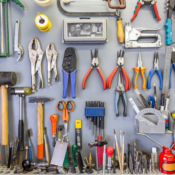
19 January 2024
Manufacturing Recruitment: Challenges in 2024
As we begin a new year, the manufacturing industry faces a continuing set of challenges, one of which is a persistent shortage in skills and the difficulty in recruiting a qualified and experienced workforce. This challenge is exacerbated by factors such as an ageing workforce, increased technical demands and the impact of robotisation.
What are the contributing factors, and how can businesses large and small bridge the gap between the workforce they need and the lack of available workers seeking a job in manufacturing?
Problem - Negative Perceptions
Manufacturing faces an image problem, with perceptions of being unappealing, boring, and outdated – as well as low skilled and low paid, with jobs involving repetitive tasks and heavy machinery. Deloitte have recently noted that younger individuals view manufacturing as lacking creativity, and a global study has indicated that women make up a mere 20% of the manufacturing and production workforce. Roles in adjacent fields like technology and logistics fare with a better reputation – and are seen as industries promising higher salaries, better benefits and more job satisfaction.Solution – Engage and Attract
Overcome any negative perceptions of your industry by focusing on its positives when attracting a skilled workforce. Create enticing and comprehensive job descriptions that highlight how the manufacturing industry offers an exciting work environment and fosters a rewarding balance between work and personal life - along with ample opportunities for career growth. Pinpoint the day-to-day activities that allow employees to leverage both their soft and hard skills in your company. In addition, be upfront and transparent, so your business can attract and engage the best talent from the off, and ensure all candidates are exactly what you’re looking for. And remember, your most potent brand ambassadors are your own employees. Encourage them to share their passion for their work and any excitement surrounding applied technologies.Problem - Automation and Robotisation
Concerns about technology leading to job reductions persist, but, actually, studies show that technology often creates new opportunities, and that - when used effectively - it enhances productivity, employee engagement and customer value.Solution – Be Proud of Your Technology
Don’t be shy of shouting about the automation and robotisation in your business to potential skilled workers. Detail to them how you are a business of the future, taking your employees and your use of technology to new heights, to the benefit of all. Focus on how automation enhances efficiency, allowing employees to focus on more engaging and fulfilling tasks and assure potential employees that the integration of technology is aimed at securing the future of the company, which, in turn, safeguards employment opportunities.Problem - An Ageing and Retiring Workforce
We live in in an ageing population, and an ageing workforce can mean a drop in adaptability, energy levels and continuity, plus the creation of a knowledge gap, where the retirement of experienced and qualified employees leaves a workplace vacuum without the handover of vital skills.Solution – Inclusivity, Upskilling and Mentorship
Foster an inclusive and respectful culture that values employees of all ages. Encourage intergenerational collaboration and communication to create a positive and harmonious work environment. Invest in upskilling or employee development, implement strategies to retain workers’ knowledge and expertise and look to other companies, like BMW, who have successfully improved productivity through accommodating an ageing workforce. Establish mentorship programs that facilitate the transfer of knowledge and skills from older, experienced employees to younger hires. This can help preserve institutional knowledge and create a collaborative work environment.Problem - Political and Socio-economic Changes
These, of course, are in constant flux. Brexit and Covid-19 are still reverberating, and there will always be other challenges to navigate when it comes to the UK’s political and economic climate.Solution - Keep Recruitment Strategies Current and Nimble
Keep your recruitment focus finely tuned but be able to pivot. Embrace the untapped potential of individuals entering the workforce straight from school or those navigating a career shift. To attract the younger generation, consider introducing apprenticeship programmes that blend on-the-job training with education. Harness the power of social networks to broadcast your job openings and maintain the relevance of your business in changing times. Encourage ‘sharing’ to expand your reach and incorporate visual elements such as photos and videos to generate excitement and interest about your company. Also, consider exploring internal prospects who might be seeking a change or advancement. Current employees come with a wealth of known strengths and experience, meaning less training compared to external hires. It also creates track record of employee longevity, attractive to other potential workers in a difficult recruitment climate. Addressing the challenges in manufacturing recruitment requires a multi-faceted approach, incorporating changes in perception, embracing technology, leveraging an ageing workforce, adapting to economic shifts and investing in upskilling initiatives. By doing so, the industry can not only overcome present hurdles but also position itself for a resilient and dynamic future.Other Blogs that may be of interest:
Managing Fire Risks in the Manufacturing Industry (ascendbroking.co.uk)# Why insurers refuse claims from your company Warehouse conditions (ascendbroking.co.uk)Need further advice? Our expert team at Ascend are knowledgeable on all aspects of the manufacturing industry and the challenges of its insurance needs.
Contact Chris Buchholz today on 07842 021430 or by email, Chris.buchholz@ascendbroking.co.uk.

Recent Posts
Ascend Broking
How AI is Revolutionising Fleet Safety
Ascend Broking
The Risks of Leaving Tools in Vehicles Overnight
Ascend Broking





